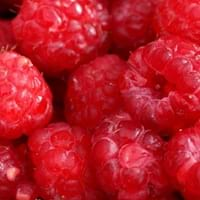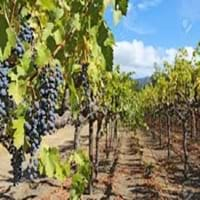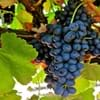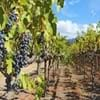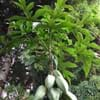What is
Life Span
Perennial
Annual and Perennial
Type
Fruit
Fruit
Origin
Hybrid origin
Hybrid origin
Types
PRIMOCANE RED RASPBERRIES ,FLORICANE RED RASPBERRIES
Red Grape, Catawba grape
Habitat
Forests, Mountains, Tree canopies
Terrestrial
USDA Hardiness Zone
4-8
5-8
AHS Heat Zone
8-1
8-5
Sunset Zone
A1, A2, A3, 1a, 1b, 2a, 2b, 3a, 3b, 4, 5, 6, 7, 8, 9, 10, 11, 12, 13, 14, 15, 16, 17, 18, 19, 20, 21, 22, 23, 24
5, 6, 7, 8, 9, 10, 11, 12, 13, 14, 15, 16, 17, 18, 19, 20, 21, 22
Habit
Upright/Erect
Vining/Climbing
Information
Plant Size
Minimum Height
120.00 cm
99+
Not Available
Minimum Width
120.00 cm
99+
Not Available
Plant Color
Flower Color
White
Green
Flower Color Modifier
Bicolor
Bicolor
Fruit Color
Red
Purple, Black
Leaf Color in Spring
Green
Light Green, Gray Green
Leaf Color in Summer
Green
Gray Green, Dark Green
Leaf Color in Fall
Green
Red, Gold, Bronze, Orange Red
Leaf Color in Winter
Light Green
Light Green
Shape
Leaf Shape
Toothed
Irregular
Thorns
Yes
No
Season
Plant Season
Spring, Summer, Fall
Summer, Fall
Growing Conditions
Sunlight
Full Sun, Partial Sun
Full Sun, Partial Sun
Growth Rate
Fast
Fast
Type of Soil
Loam, Sand
Loam, Sand
The pH of Soil
Acidic, Neutral
Acidic, Neutral, Alkaline
Soil Drainage
Well drained
Well drained
Bloom Time
Spring, Summer
Late Spring, Early Summer
Repeat Bloomer
Yes
No
Tolerances
Drought
Drought
Care
Where to Plant?
Container, Ground, Pot
Ground
How to Plant?
Suckers
Seedlings, Transplanting
Plant Maintenance
Medium
Medium
Watering Plants
Watering Requirements
Average Water Needs
Requires regular watering
In Summer
Lots of watering
Lots of watering
In Spring
Moderate
Moderate
In Winter
Average Water
Average Water
Soil
Soil pH
Acidic, Neutral
Acidic, Neutral, Alkaline
Soil Type
Loam, Sand
Loam, Sand
Soil Drainage Capacity
Well drained
Well drained
Sun Exposure
Full Sun, Partial Sun
Full Sun, Partial Sun
Pruning
Remove damaged leaves, Remove dead branches, Remove dead leaves
Remove damaged leaves, Remove dead branches, Remove dead leaves
Fertilizers
All-Purpose Liquid Fertilizer
All-Purpose Liquid Fertilizer
Pests and Diseases
Red blotch
Red blotch
Plant Tolerance
Drought
Drought
Facts
Flowers
Insignificant
Insignificant
Flower Petal Number
Single
Not Available
Fruits
Showy Fruit
Yes
Yes
Edible Fruit
Yes
Yes
Fragrance
Fragrant Flower
No
Yes
Fragrant Fruit
Yes
Yes
Fragrant Leaf
No
No
Fragrant Bark/Stem
No
No
Showy Foliage
No
Yes
Showy Bark
No
No
Foliage Texture
Medium
Coarse
Foliage Sheen
Matte
Matte
Evergreen
No
No
Invasive
No
No
Self-Sowing
No
No
Attracts
Birds, Butterflies
Birds
Allergy
Abdominal pain, breathing problems, Diarrhea, Eczema, Fainting, Itchiness, Nausea, Vomiting, wheezing
Not Available
Benefits
Uses
Aesthetic Uses
bank hedging, Cottage Garden, Slopes hedging
Not Used For Aesthetic Purpose
Beauty Benefits
Not Available
Good for skin and hair, Not Available, Speed hair growth, Stops hair loss
Edible Uses
Yes
Yes
Environmental Uses
Air purification
Air purification, Food for birds
Plant Benefits
Medicinal Uses
anti-inflammatory, Anti-oxidant, Cancer, Improve heart health, Liver Protection, Skin Whitening and Pigmentation Medicine, Weight loss
Aging, Alzheimer’s Disease, Antibacterial, Asthma, cholesterol-lowering, constipation, Digestion problems, Kidney problems, Migraines
Part of Plant Used
Fruits, Leaves, Root
Fruits
Other Uses
Jam, Jelly, Used As Food, Used for its medicinal properties
Used As Food, Used for its medicinal properties
Used As Indoor Plant
No
No
Used As Outdoor Plant
Yes
Yes
Garden Design
Edible, Fruit / Fruit Tree, Hedges
Edible, Fruit / Fruit Tree, Vine
Scientific Name
Botanical Name
RUBUS 'Autumn Bliss'
VITIS 'Campbell Early'
Common Name
Red Raspberry
Purple Grape
In Hindi
रूबस idaeus
बैंगनी अंगूर के पौधे
In German
Himbeere
Lila Traubenpflanze
In French
Rubus idaeus
usine de raisin pourpre
In Spanish
Rubus idaeus
plantas de uva morada
In Greek
σμέουρο
Μωβ εργοστάσιο σταφυλιών
In Portuguese
Rubus idaeus
planta uva roxa
In Polish
Rubusidaeus
Purpurowy roślin winogron
In Latin
Rubus idaeus
Uva herba
Classification
Kingdom
Plantae
Plantae
Phylum
Magnoliophyta
Magnoliophyta
Class
Magnoliopsida
Magnoliopsida
Order
Rosales
Rhamnales
Family
Rosaceae
Vitaceae
Genus
Rubus
Vitis
Clade
Angiosperms, Eudicots, Rosids
Angiosperms, Eudicots, Rosids
Tribe
Rubeae
Not Available
Subfamily
Rosoideae
Not Available
Number of Species
Not Available
Not Available
|
||
|
||
|
